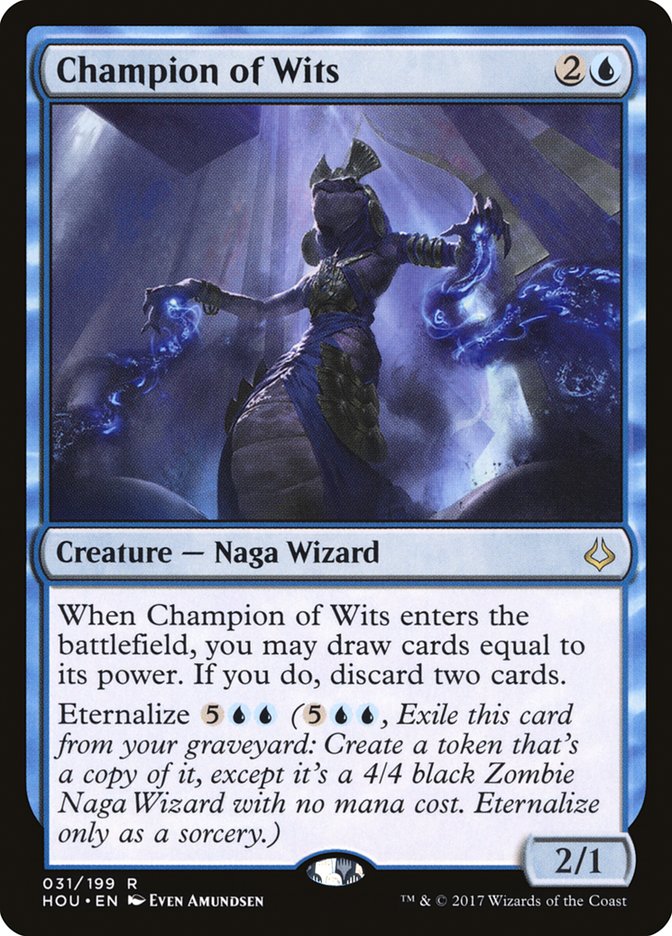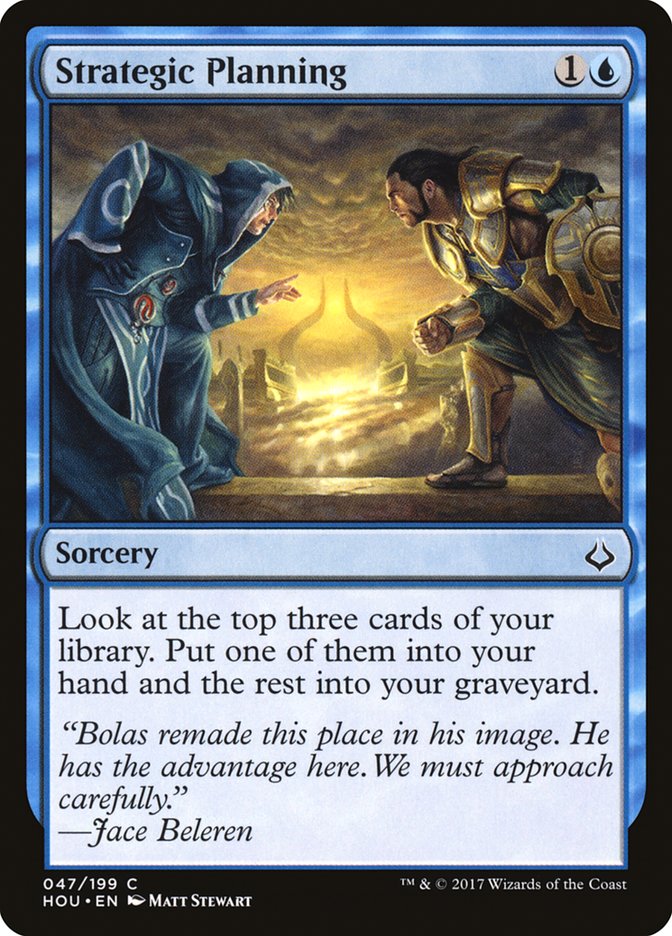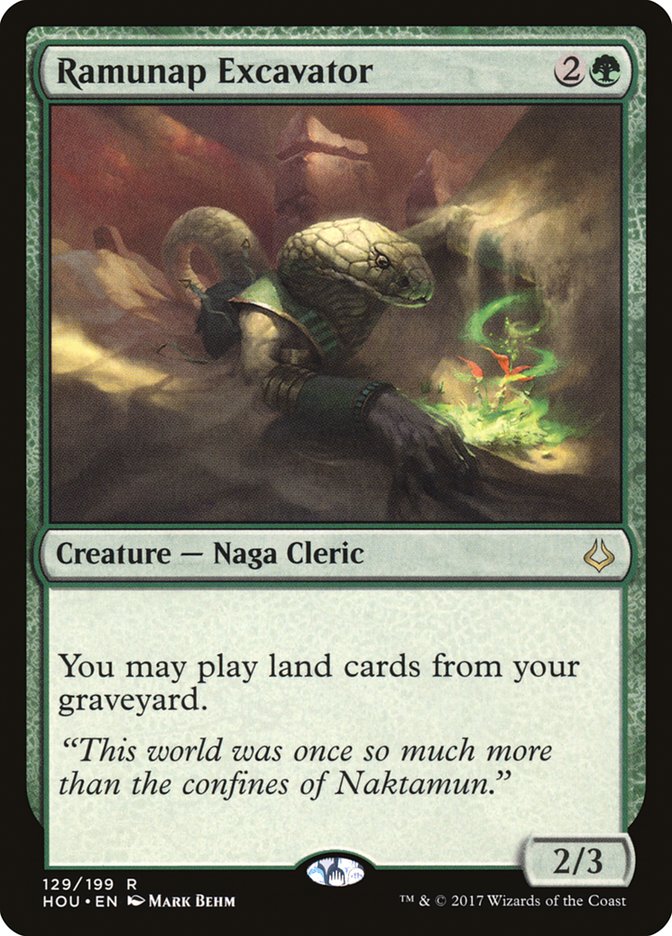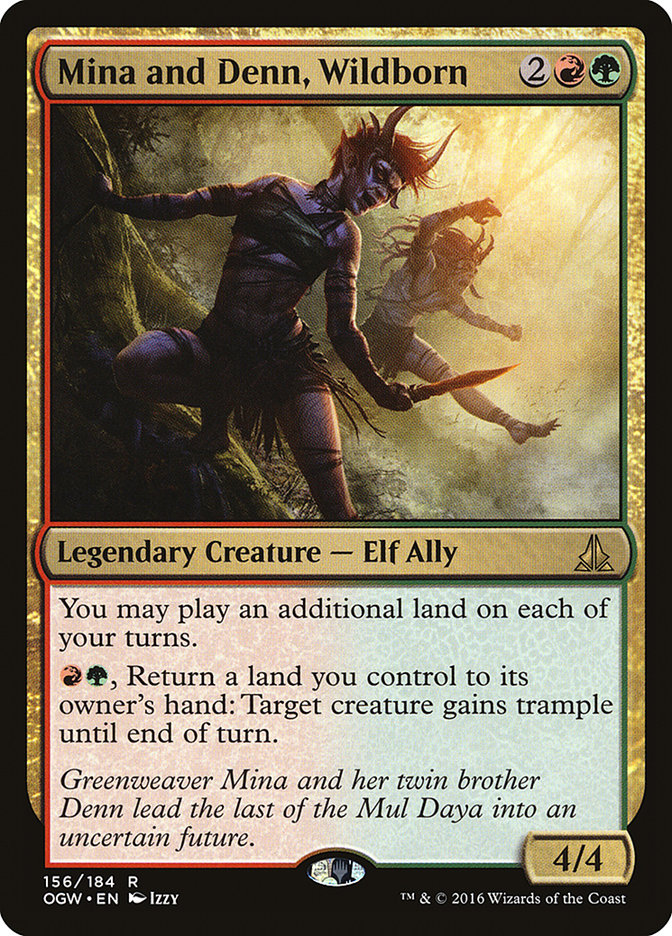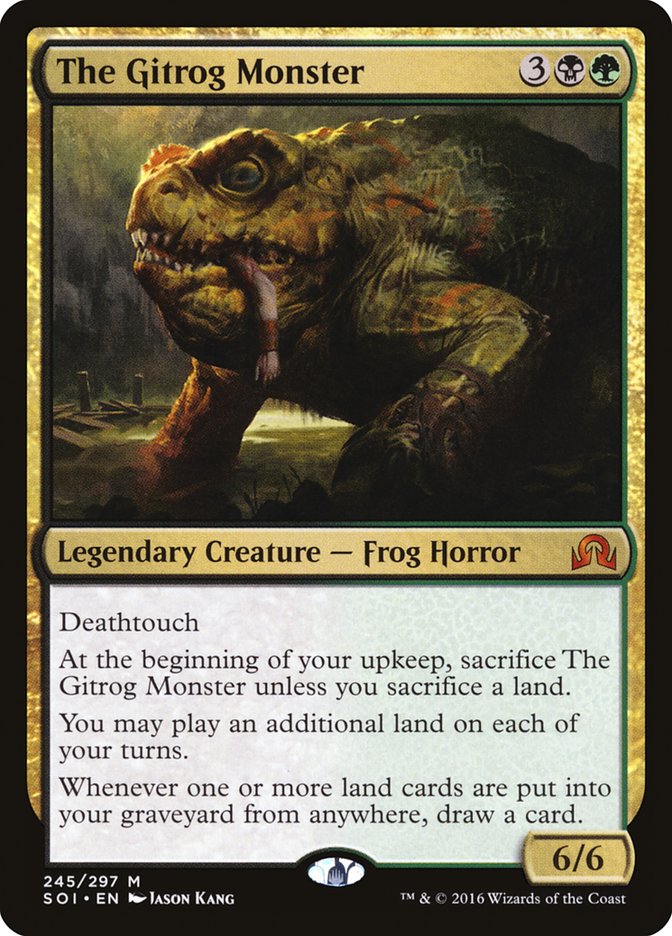This past weekend the SCG Tour made its way to Cincinnati for a brand-new Standard format with the release of Hour of Devastation. I’m not usually one to play much at the tournament site aside from the matches themselves, but I found myself playing games in-between rounds just for the heck of it because it was so fun! I’d like to say, after all the bannings and all of the flack Standard has gotten this year, I had a ton of fun playing Standard!
Despite not having the most spectacular finish, losing in the last round to not cash, I thoroughly enjoyed the deck I played and was able to do all kinds of crazy things that my opponents might not have seen coming.
Creatures (15)
- 1 World Breaker
- 1 Goblin Dark-Dwellers
- 1 Tireless Tracker
- 2 Elder Deep-Fiend
- 1 Ishkanah, Grafwidow
- 4 Rogue Refiner
- 2 Glorybringer
- 3 Champion of Wits
Planeswalkers (2)
Lands (23)
Spells (20)

If you’ll look back, you might have noticed this is very similar to a deck I did a deck tech with Nick Miller at the Season One Invitational just a few weeks ago.
This deck got some big upgrades with Hour of Devastation. Champion of Wits takes this deck from a midrange deck that can go big against the beatdown decks with the back side of Kozilek’s Return to a deck that can fully prey on any control deck and grind them out completely. I will say, if you take this list and get paired against someone casting Glimmer of Genius and Torrential Gearhulk who isn’t also packing Nicol Bolas, God-Pharaoh, congrats, you’ve just been awarded the bye.
Champion of Wits lets you sift through your deck in Game 1, discarding useless removal spells and digging you to your end-game they just can’t beat. World Breaker is a card that control decks have long struggled with, since it represents limitless threats unless exiled. While it’s possible that a Magma Spray in conjunction with another removal spell could be a way out of the lock, they’re usually too busy casting that kind of card on some of your earlier three-drops.
So what went wrong? I only ended up with a 9-6 record on the weekend despite my confidence with the deck and results from playtesting on Magic Online the week leading up. The main issue with this deck is one I find a lot of Tier 1.5 or Tier 2 decks have: there’s no “nut draw” capability in the deck. What I mean by that is there’s no sequence of plays that the deck can make to strike fear into your opponent’s eyes in the early turns of the game. Some examples:
Mardu Vehicles can come at you with Toolcraft Exemplar into Heart of Kiran followed by a Scrapheap Scrounger putting you under the gun as early as turn 3. Let’s not forget Gideon, Ally of Zendikar that could be waiting in the wings, and he can often end the game all by himself.
Mono-Black Zombies curves triple-one-drop ,one of which could be Cryptbreaker, a late-game engine that unchecked can take over a game rather quickly. Not to mention multiple lord effects and resilient creatures along with one of the best removal spells in the format, Dark Salvation.
Temur Emerge can start off very unassuming, setting up its graveyard with a Vessel of Nascency, Grapple with the Past, or Champion of Wits. Then it can explode onto the battlefield with a Stitchwing Skaab discarding multiple Prized Amalgams before using multiple Elder Deep-Fiends to prevent your opponents from ever getting to cast sorcery-speed spells again while hitting for massive amounts of damage.
Those are a few of the decks with draws many decks just can’t keep up with, and I feel that Temur Delirium just doesn’t have those capabilities. While that doesn’t mean it’s a bad deck, it means you need your answers to break right for you against what your opponent is doing. While some of your answers also come with huge tempo swings and can close games relatively quickly, it might not be worth sacrificing some of the early turns of the game to make that all work.
Of the cards in the deck that surprised me, Chandra, Torch of Defiance was the clear winner. I don’t believe I’ve used Chandra’s ability to make mana during her entire legality previously as much as I did this weekend.
One thing that might have changed to make that change happen is the lack of direct planeswalker removal being played at the moment. It used to be that you wanted to make sure you got the most value from Chandra, Torch of Defiance possible because it was likely to be answered quickly and hitting a few extra cards can be all the difference. While that remains true for the most part, with the addition of Champion of Wits, mana is king when you never run out of resources. A common play pattern I was in involved casting Champion of Wits on turn 3; trading it off with literally anything; casting Chandra, Torch of Defiance on turn 4; and using its minus ability to kill a creature.
On the following turn, after playing a fifth land, I’d use her mana ability and eternalize Champion of Wits, creating a sizeable body and casting a Careful Consideration in the process. One thing I’ve taken away from this event is that Champion of Wits is as real as I thought prior and we’ve only scratched the surface.
Traveling to the opposite end of the spectrum, Tireless Tracker was the least-impressive card I had in my deck. With Magma Spray on the rise and the awkward tension of playing into or around Censor and Glorybringer in full force, spending mana to crack Clues never felt so inefficient, especially in a deck that generally plays from behind. While Tireless Tracker is still an amazing card and has a home in this format, Champion of Wits certainly overshadows it in this deck.
Going forward, I’d be sure to include some additional answers for Mono-Red as well as putting Confiscation Coup back in the sideboard because of W/U Monument. The one threat they seem to keep getting me with is Ormendahl, Profane Prince. I only had Commit // Memory to fight it and that card was sort of a catchall and not a good answer if the game went long, which it often did. After some minor changes with Struggle // Survive being there to fight a potential Mill deck as well as help against Prized Amalgam decks, here’s where I’d take the deck moving forward.
Creatures (14)
- 1 World Breaker
- 1 Goblin Dark-Dwellers
- 2 Elder Deep-Fiend
- 1 Ishkanah, Grafwidow
- 4 Rogue Refiner
- 2 Glorybringer
- 3 Champion of Wits
Planeswalkers (3)
Lands (23)
Spells (20)

While we did see some interesting decks from this past weekend, there was one card that in retrospect I didn’t give enough attention and feel like could make a huge impact next week at the Pro Tour.
This card is so far up my alley I’m shocked I haven’t tried more decks with it. It is obvious that this card gains value the more open the format is, and Modern might be where it’s put to work best alongside fetchlands and other utility lands like Ghost Quarter and Horizon Canopy; however, in Standard, just ensuring you hit land drops can be all it needs to be. I wouldn’t think of this as a three-drop creature in most situations; I’d just almost always play it and be able to hit a land out of my graveyard, so I don’t care if it lives or dies; it’s already gained value. From there, if they don’t answer it, every turn it continues to generate more and more mana!
Creatures (16)
- 2 Mina and Denn, Wildborn
- 2 Tireless Tracker
- 2 The Gitrog Monster
- 1 Ishkanah, Grafwidow
- 4 Grim Flayer
- 1 Noxious Gearhulk
- 4 Ramunap Excavator
Lands (24)
Spells (20)

I’ve wanted to have a playable The Gitrog Monster deck in Standard since its printing and we might finally have some tools! It’s now or never, really, seeing as this is the last format change we’ll see while The Gitrog Monster is Standard-legal.
Both Mina and Denn, Wildborn and The Gitrog Monster have that handy little potentially broken line of text that allows you to play additional lands each turn. On its own, that’s not very impressive, since you’ll eventually run out of lands in hand or even in deck at times, as your lands are finite and even drawing additional cards from The Gitrog Monster’s ability could see you eating away at resources you’ve run out of.
Ramunap Excavator fixes all that! Having a slight delirium theme in the deck to utilize Traverse the Ulvenwald and enhance Grim Flayer while also filling our graveyard with lands for the Excavator seems like right where I want to be.
Mina and Denn, Wildborn has the added bonus of being able to give our deathtouching The Gitrog Monster trample, hitting for quite a bit but, more importantly, being able to pick up a card like Mortuary Mire over and over again, making sure you never run out of gas; that interaction might not happen all too often but it’s definitely one to be aware of.
Another archetype that could take advantage of Ramunap Excavator is the Hour of Promise Ramp family I expected to see more of in Cincinnati that I did.
Creatures (9)
Planeswalkers (4)
Lands (24)
Spells (23)

While Ramunap Excavator doesn’t do anything in the way of accelerating your lands to casting the giant Eldrazi, it does ensure you hit your mid-game lands after setting up a bit with Vessel of Nascency and Grapple with the Past. While Ramunap Excavator isn’t a huge inclusion to the deck, it fills a role and approaches the opponent from an angle that they might not be ready for.
It’s also possible the best variation of a deck that wants Ramunap Excavator is one also utilizing Champion of Wits for a nice turn 3-4 setup.
Creatures (12)
Lands (22)
Spells (26)
- 2 Unsummon
- 4 Strategic Planning
- 4 Crush of Tentacles
- 4 Oath of Nissa
- 4 Spring
- 4 Haze of Pollen
- 4 Hour of Promise
Sideboard

While Ramunap Excavator is a new tool this deck gets that could make finding all your lands going up the chain easier, the real winner for this deck is Strategic Planning and Champion of Wits giving this deck the filtering it’s long since needed. Ramunap Excavator just fits alongside those cards so well that I believe it’s worth the inclusion here and is another tool to bridge the gap between early turns and late. While we’re not a Turbo Fog deck, as Haze of Pollen is often seen in, a Fog effect in a deck like this, that might be a turn or so slow at times, can make all the difference.
While we have a massive amount of information from the Open in Cincinnati this past weekend, there’s still much room to explore. Week 1 is in the books and W/U Monument has looked very impressive, as have various control strategies, and there’s no telling what will come from this nearly wide-open metagame we have on our hands.
I’m leaving tomorrow (Saturday) for Kyoto, Japan in hopes of finding the best deck, and hopefully, like last time, bringing it right to your eyes straight from the Pro Tour!


